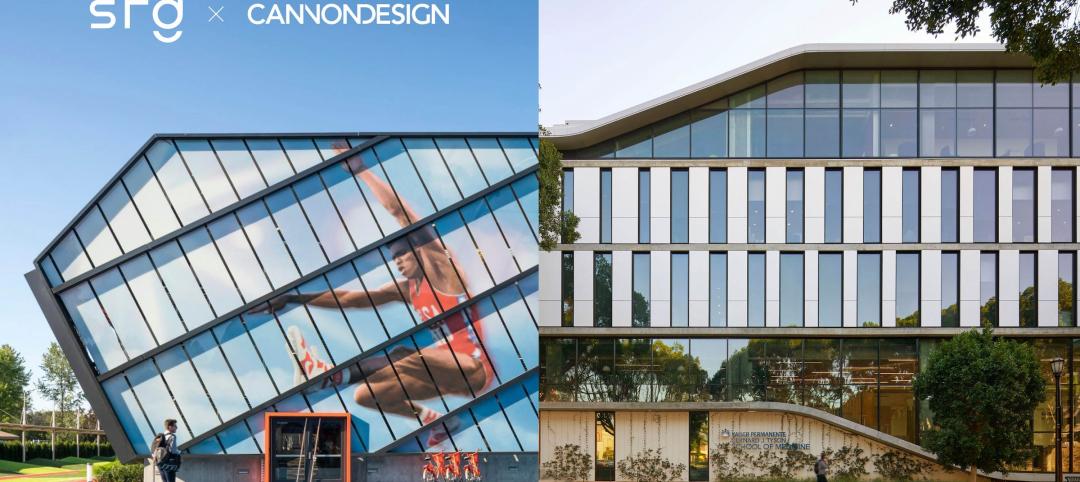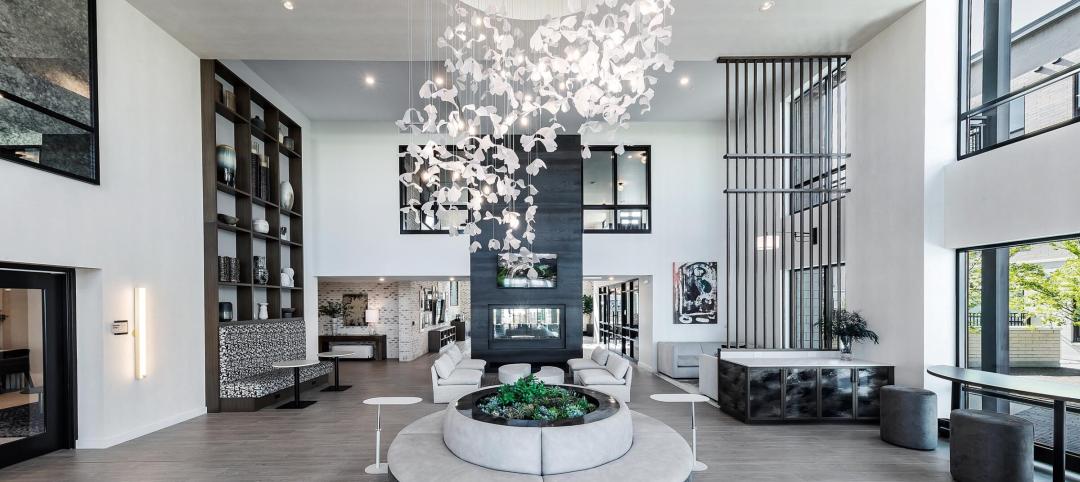In 2020, after the coronavirus pandemic hit, millions of people were stranded in their homes with little else to do outside of remote work than watch TV. That isolation created an unprecedented demand for new and original content, which in turn sparked a proliferation of streaming services that urgently needed more production space.
In 2020, there were about 12 million sf of sound stages in North America, according to CBRE estimates. And the utilization rate of that space, which three years earlier had stood at around 70 percent, was close to 100 percent, according to a Deloitte report that evaluated the Los Angeles, New York, and Toronto markets. The “high spend” on production was creating shortages and driving demand for new sound stages, stated Deloitte.
This void has inevitably attracted investment capital. In June 2020, Blackstone paid a reported $1.69 billion to acquire a 49 percent stake in Hudson Pacific Properties, which is active in sound stage acquisition, construction, and adaptive reuse. Last August, Blackstone and Hudson revealed plans to spend nearly $1 billion to build a film and TV studio campus in the United Kingdom.
Other development investors buzzing around this sector include Hackman Capital (which earlier this month acquired 130,000 sf of sound stage space from Raleigh Studios in Hollywood, and 182,000 sf of space on Sony Pictures’ animation campus); Quixote, Trammell Crow, Amazon Studios, and Square Mill Capital Management.
The race is now on to catch up with anticipated future production demand. The Hollywood Reporter published an article last month about the “boom” in building proposals, retrofits, and competition for longer-term leases. “I’ve never seen so much activity in my career,” Robert Hale, FAIA, Partner and Creative Director with the design collective RIOS, told the trade newspaper.
ARCHITECTS GETTING IN ON THE ACTION
RIOS is among the architecture and design firms that are capitalizing on this demand. Gensler has been working with Trilith Studios in Atlanta to expand its 700-acre film studio by 220,000 sf with spaces that include production workshops, smart sound stages, and a four-story creative office center that’s scheduled to open this spring.
Before the pandemic, construction accounted for 10 percent of Relativity Architects’ soundstage work; now, it represents 50 percent, confirms Tima Bell, Assoc. AIA, Principal with the Los Angeles-based firm, whom BD+C spoke with yesterday.
Bell, who grew up in L.A. (his father, Edward, was an actor and producer, and his stepmother was the actress and competitive swimmer Esther Williams), notes that studios in general had typically preferred to lease stages on a short-term basis, for as long as they needed the space to shoot a certain film. “Netflix changed everything,” he says of the streaming platform that has become a content production juggernaut. “In fact, Netflix needed space more than it needed content.”
Netflix started taking three-year leases, and quickly locked up soundstage spaces in Los Angeles, New York, and London. Other streaming platforms that subsequently came on the scene have followed suit. So while there are still stages available for leasing, their numbers are far fewer; hence, the demand for new construction.
“I’ve been in the business a long time, and content has never slowed; it has only expanded,” says Bell. Even if the amount of content produced was static, there wouldn’t be excess sound stage space for another five years. What Bell does foresee, though, is a shift in the way movies are made toward relying more on virtual sets via Extended Reality (XR) technology.
NEW BUILDS AND RENOS ABOUND

Bell says his firm’s sound stage clients run the gamut from Internet content providers, management companies, and capital investors. Production companies still would rather lease than own space, and sound stage clients only show interest after projects have secured a permit.
The “key ingredients” in designing and building studios, Bell explains, are clear floor space (i.e., no columns), ample ceiling height, and power. And because these buildings usually require a large real estate footprint, the sound stages are often located in industrial areas of cities. For example, last year Relativity was working with Capture Studios on a remodel of an existing theater in Studio City along the Los Angeles River. For that project, the Building Team removed an oversized mezzanine and opened up the second-floor ceiling. The team also redid the building’s façade.

Relativity is currently working on adaptive reuses of two cold-storage warehouses, one that will be 90,000 sf and the other 200,000 sf, of which 120,000 sf will be stages and the rest offices.
Bell adds that his company is in the early design stages of two ground-up studio campuses. Nondisclosure agreements prevented him from saying much more beyond that the projects range from 14 to 20 acres, and 12 to 18 stages in multiple buildings sized between 15,000 and 50,000 sf.
(On its website, Relativity Architects says it is designing a 210,000-sf studio campus in Canada that will have four production stages, post-production offices, screening rooms, and support and amenities spaces. Relativity is also engaged in a project for Ace + Mission Studios in Los Angeles that, when completed, will offer 604,494 sf of space that includes three soundstages and production offices.)

Bell says his firm is in design on other sound stage projects in New York, Atlanta, and Eastern Europe. He notes that outside of Los Angeles, the availability of tax credits plays a large role in where stages are being built.
Because it has been designing sound stages for several years, Relativity Architects has a track record that newcomers to this sub-sector do not, says Bell. “With only a couple of exceptions, most of the new entrants don’t have experience with this building type, which has circulation and technology requirements.”
Sound stages also open new creative portals for Relativity’s architects and designers who previously have worked on other building types like hospitality or housing.
Related Stories
Urban Planning | Feb 5, 2024
Lessons learned from 70 years of building cities
As Sasaki looks back on 70 years of practice, we’re also looking to the future of cities. While we can’t predict what will be, we do know the needs of cities are as diverse as their scale, climate, economy, governance, and culture.
Giants 400 | Feb 5, 2024
Top 90 Shopping Mall, Big Box Store, and Strip Center Architecture Firms for 2023
Gensler, Arcadis North America, Core States Group, WD Partners, and MBH Architects top BD+C's ranking of the nation's largest shopping mall, big box store, and strip center architecture and architecture engineering (AE) firms for 2023, as reported in the 2023 Giants 400 Report.
Laboratories | Feb 5, 2024
DOE selects design-build team for laboratory focused on clean energy innovation
JE Dunn Construction and SmithGroup will construct the 127,000-sf Energy Materials and Processing at Scale (EMAPS) clean energy laboratory in Colorado to create a direct path from lab-scale innovations to pilot-scale production.
Architects | Feb 2, 2024
SRG Partnership joins CannonDesign to form 1,300-person design giant across 18 offices
SRG Partnership, a dynamic architecture, interiors and planning firm with studios in Portland, Oregon, and Seattle, Washington, has joined CannonDesign. This merger represents not only a fusion of businesses but a powerhouse union of two firms committed to making a profound difference through design.
Giants 400 | Feb 1, 2024
Top 90 Restaurant Architecture Firms for 2023
Chipman Design Architecture, WD Partners, Greenberg Farrow, GPD Group, and Core States Group top BD+C's ranking of the nation's largest restaurant architecture and architecture engineering (AE) firms for 2023, as reported in the 2023 Giants 400 Report.
Standards | Feb 1, 2024
Prioritizing water quality with the WELL Building Standard
In this edition of Building WELLness, DC WELL Accredited Professionals Hannah Arthur and Alex Kircher highlight an important item of the WELL Building Standard: water.
Luxury Residential | Feb 1, 2024
Luxury 16-story condominium building opens in Chicago
The Chicago office of architecture firm Lamar Johnson Collaborative (LJC) yesterday announced the completion of Embry, a 58-unit luxury condominium building at 21 N. May St. in Chicago’s West Loop.
Industry Research | Jan 31, 2024
ASID identifies 11 design trends coming in 2024
The Trends Outlook Report by the American Society of Interior Designers (ASID) is the first of a three-part outlook series on interior design. This design trends report demonstrates the importance of connection and authenticity.
Museums | Jan 30, 2024
Meier Partners' South Korean museum seeks to create a harmonious relationship between art and nature
For the design of the newly completed Sorol Art Museum in Gangneung, South Korea, Meier Partners drew from Korean Confucianism to achieve a simplicity of form, material, and composition and a harmonious relationship with nature. The museum is scheduled to open on February 14. It is the firm’s first completed project since restructuring as Meier Partners.
Luxury Residential | Jan 30, 2024
Lumen Fox Valley mall-to-apartments conversion completes interiors
Architecture and interior design firm Morgante Wilson Architects (MWA) today released photos of its completed interiors work at Lumen Fox Valley, a 304-unit luxury rental community and mall-to-apartments conversion.

















